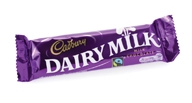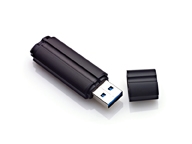FEATURE27 August 2012
All MRS websites use cookies to help us improve our services. Any data collected is anonymised. If you continue using this site without accepting cookies you may experience some performance issues. Read about our cookies here.
FEATURE27 August 2012
Dominic Twose, global head of knowledge management at Millward Brown, on the benefits of creativity in advertising.

A few years ago I had an interesting experience in a cinema. I’d arrived early to get my seat, but the cinema was already nearly full. People were talking and laughing through the ads, waiting for the film to begin. Then another ad started. This one featured two children sitting side by side facing the camera. A lively electropop tune kicked-in and the children began moving their eyebrows in rhythm to the music. A hush fell over the room as everyone watched the facial gymnastics on the screen.
That ad for Cadbury’s Dairy Milk is a good example of one of the benefits of creativity in advertising: unique ideas grab attention. People are bombarded by ads every day, but they mentally screen most of them out, either actively or passively. When people are not interested in hearing about brands – which is, admittedly, most of the time – they’re not interested in looking at ads either. But creativity can help an ad circumvent the normal filtering process. Creativity can make people pay attention.

Simonides of Ceos is an Ancient Greek poet credited with developing a system of mnemonics called the ‘memory palace’, whereby you associate information you need to remember with locations on a given route. The story goes that he was attending a banquet when he heard that two young men were waiting outside to see him. As he left the dining hall, it collapsed behind him. During the excavation of the rubble, Simonides was able to identify each guest, crushed beyond recognition, by recalling their positions at the table.
Successful mnemonic systems depend on creativity. The more creative and dramatic the images you form to associate with information, the more vivid your memories will be. Memory coach Harry Lorayne, who did a lot to popularise mnemonics, suggests that the links should be ridiculous or illogical, out of proportion, exaggerated or in motion.
Ordinary people use mnemonic systems all the time, whether they realise it or not – such as when they recall an advertising jingle. Our analysis shows that when advertising is exciting, intriguing, funny, sexy, surprising, thought-provoking, different or eye-catching, consumers are left with associations planted so deeply they simply can’t forget them.

Early in the twentieth century, a store owner in New York filled a goldfish bowl with water and placed it alongside a sign that read “Invisible fish from South America”. Before long a crowd had gathered, and the police had to be called to clear the sidewalk of people trying to see the invisible fish. Such displays have been used many times since to generate curiosity in storefronts.
The same type of curiosity can be generated by interesting, memorable advertising associations. Such curiosity may lead someone to try a brand, especially if it is a low-risk, low-cost purchase. At the very least, it will encourage them to find out more about a product, particularly if it’s a major purchase like a car.

In 2007, at the behest of Washington Post journalist Gene Weingarten, the violinist Joshua Bell entered a Metro station in Washington, DC. Dressed casually, he stood against a wall, took out his Stradivarius and began to play. The “concert” was videotaped with a hidden camera. The film showed that during the time Bell was playing 1,097 people passed by but only five slowed down to listen, and he collected just $32.17. Just three days earlier, listeners had filled Symphony Hall in Boston to hear him play. Good seats went for $100 or more. What was the difference?
Context. People expect to hear great music in a famous concert hall, but not in an underground station, and so they are unlikely to recognise it when they do. The way experiences are framed can fundamentally affect the way they are perceived.
Anyone who has been involved in product testing will recognise this. A product that produces average results when tested blind might fare substantially better when branded. Framing matters, and so vivid advertising memories (maybe through associating particular claims or specific emotions with a brand) can colour perceptions of the brand itself and powerfully enhance perceptions of the product experience.

Imaginative and amusing associations can help people remember things, from grocery lists to random strings of numbers. Advertising also creates associations, linking brands with motivating ideas and concepts – though the means used are usually more subtle and sophisticated than the simple mnemonic techniques described here.
The world’s most creative ads are celebrated annually at the Cannes Lions International Festival of Creativity. The question of how to evaluate creativity is an important issue for those of us in the advertising industry. Millward Brown’s study of Cannes Lions award winners (published in Admap in November 2011 ) found that winning ads scored high on enjoyment, involvement, positive emotions and – crucially – being different from other ads, confirming the notion that there are no patterns, no rules to producing highly creative advertising. The reality is that the most successful ads are those that are unlike any other. They are “creative” in that they transcend traditional ideas to create meaningful new ones.

In the Admap paper we also analysed the results of ads deemed highly effective by virtue of receiving an IPA or an Effie award. The ads scored high on all the same measures as the Lions winners, but they also tended to fare well on branding: their creativity was linked to the brand.
In 2011 Cannes introduced a new Creative Effectiveness category. This year’s winner, Even Angels Will Fall, epitomised the criteria set out here. It’s a highly engaging distinctive and memorable ad featuring beautiful angels falling to Earth and ripping off their haloes, having been seduced by a young man wearing Axe Excite deodorant.
Last year’s Grand Prix winner was a campaign for Walkers Crisps that showed the excitement generated when a host of celebrities, including the racing driver Jenson Button and the actress Pamela Anderson, visited the small English town of Sandwich – the message being, a bag of Walkers crisps has the same effect on your lunchtime sandwich. The ad was also judged a winner by Link, Millward Brown’s pre-testing system. It grabbed attention and was clearly memorable and well branded. Sales increased 26% and endorsement of the statement that Walkers “makes my lunch more enjoyable” rose from 21% to 39%
over the course of the campaign.
0 Comments